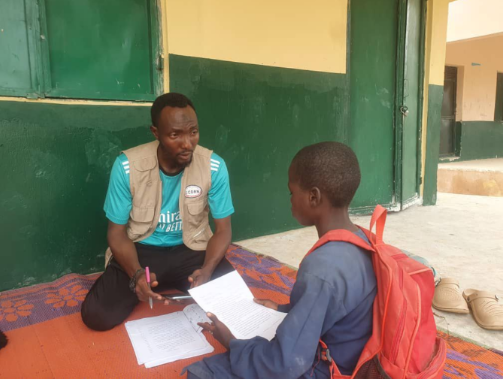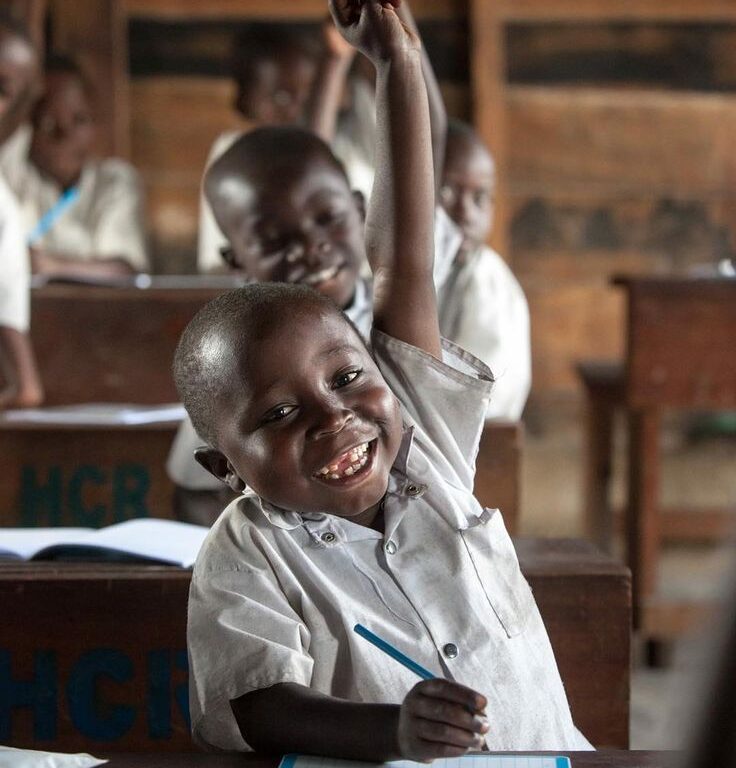Since 2009, insurgency by Non-State Armed Groups (NSAGs) has severely disrupted education in Nigeria’s Borno, Adamawa, and Yobe (BAY) States. These states have witnessed school closures, destruction of learning infrastructure, and displacement of families. Among the estimated 250 million out-of-school children globally, about 20 million are in Nigeria, with 2.8 million in the BAY states alone requiring Education-in-Emergencies (EiE) support. The prolonged conflict led to the closure of 802 schools, the destruction of 497 classrooms, and left another 1,397 classrooms in dire need of rehabilitation.
To tackle these challenges, the Education Cannot Wait – Multi-Year Resilience Programme (ECW-MYRP) was launched between 2021 and 2023. The program aimed to provide inclusive, equitable, and quality education for 2.9 million crisis-affected children and adolescents—55% of whom were girls. It focused on restoring access to learning through infrastructure rehabilitation, psychosocial support, vocational training for youth, and the training of 7,000 teachers in child protection and mental health. Special attention was given to girls, children with disabilities, and learners in remote rural communities where access to basic services remains limited.
This endline evaluation assessed the program’s effectiveness, relevance, coherence, efficiency, sustainability, and overall impact, based on the OECD-DAC evaluation framework. The study explored whether ECW-MYRP achieved its objectives, met the differentiated needs of conflict-affected learners, and aligned with national education policies and humanitarian frameworks. It also examined the extent to which the program fostered sustainable change in education systems, learning environments, and community engagement.
A mixed-methods approach was used for the evaluation, combining face-to-face structured surveys and in-depth qualitative interviews. A total of 1,440 learners across 45 schools were surveyed, alongside 90 teachers, 45 headteachers/administrators, and 24 School-Based Management Committee (SBMC) members. Additionally, 58 Key Informant Interviews (KIIs) and 21 Focus Group Discussions (FGDs) were conducted with parents, caregivers, adolescents, community leaders, teachers, and implementing partners. Data was collected using digital tools and analyzed with SPSS, STATA, NVivo, and Difference-in-Differences (DiD) techniques to assess changes in learning outcomes and school-level impact.


The evaluation found that while ECW-MYRP made commendable progress in improving school infrastructure, psychosocial support, and educational access, significant disparities still exist. Rural learners, children from the lowest income brackets, and girls remain the most disadvantaged. Sixty-three percent of rural learners and 84% of children in the lowest wealth quartile could not read or write, compared to 50% in urban areas. Additionally, 35% of schools lacked toilets, and many had no access to clean water or adequate furniture. The program responded by rehabilitating classrooms, creating safer learning environments, and supporting transitions from non-formal to formal education systems.
Despite challenges such as the long school holidays which limited access to some educators during data collection, the study maintained strong response rates for most categories and ensured ethical integrity throughout. Consent was obtained from all participants, and child safeguarding protocols were strictly followed. The participatory, child-centered design allowed for the meaningful inclusion of girls, boys, and children with disabilities in shaping the evaluation findings.
Ultimately, ECW-MYRP contributed to increased access to quality education, strengthened education systems in fragile settings, and fostered community ownership and engagement. The final evaluation offers critical insights and evidence to inform future investments in education in conflict-affected regions, ensuring that no child is left behind—even in the most challenging environments.

